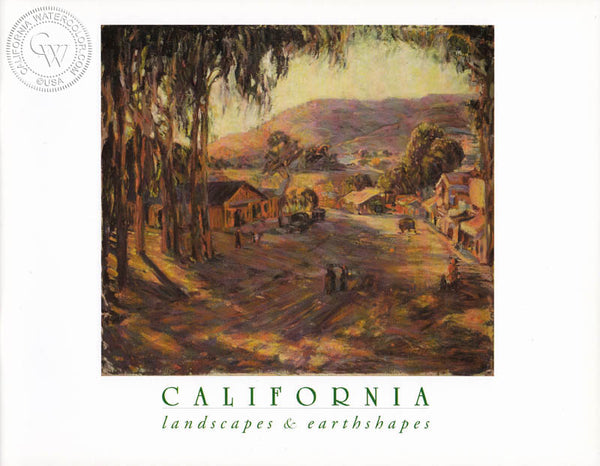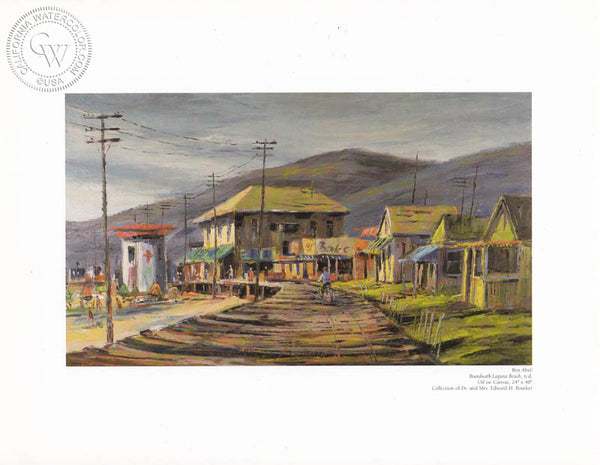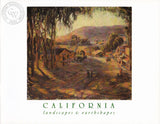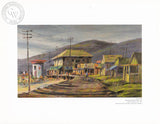California Landscapes & Earthshapes
Los Angeles County Fair Millard Sheets Gallery, Sept 10-Sept 27, 1998.
32 pages, 57 illustrations, softcover - $40
By Susan M. Anderson
American’s feelings about the land and about the Western frontier have changed over time in response to varying cultural, aesthetic, and historical conditions. A study of landscape painting in California from 1850 to 1950 reveals prevailing attitudes about the land, as well as larger cultural forces in American life. With the opening of the American West in the mid-1800s, artists with an adventurous spirit arrived from other parts of the country in search of scenic views. These painters had a reverential attitude to nature and saw it as their mission to describe their great country and thereby reveal God’s presence in nature. Their paintings of California expressed national pride and optimism, celebrating the land as well as a belief in material progress. Early landscape paintings were often large-scale, panoramic canvases that glorified the untamed wilderness in exacting detail, focusing on California’s geographic variety and its symbolic image as a “golden” land, abundant with nature and opportunity and with little evidence of human presence. Some of the most prominent artists to depict the California wilderness in this way were Albert Bierstadt, William Keith, and Thomas Hill, who, for the most part, applied the East Coast aesthetics of the so-called Hudson River School. San Francisco was the state’s cultural capital, having developed both rich patronage and art academics in the wake of massive influx of wealth following the Gold Rush. Landscape artists in significant numbers would not be drawn to Southern California until somewhat later, when the boom of the 1880s swelled the population and established a basis for cultural development.
The national appreciation of the western wilderness fueled a preservation movement in which Thomas Hill played a prominent role. Because the federal government chose California as the site of the first national park, in the Yosemite Valley in 1864, the cult of the wilderness was particularly strong in the state and the park became a favorite subject of artists. In his paintings of Yosemite, such as Yosemite Falls (1885), Hill also often incorporated techniques from the French Barbizon School, using subdued coloration, loos and expressive brushwork, and simplified treatment in the foreground area.






